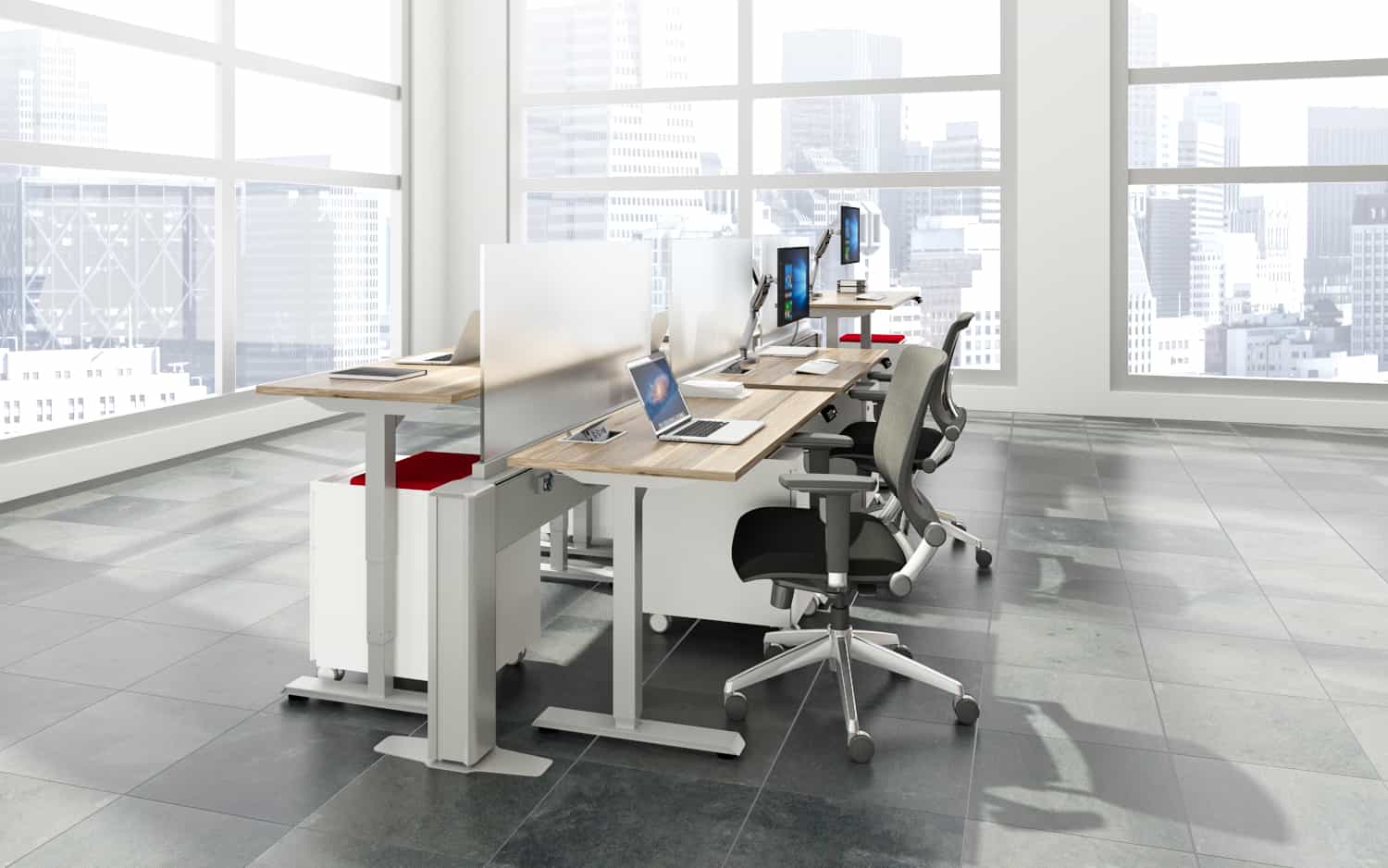Avoid These Common Sit-Stand Mistakes
Mar 21, 2019
You’ve done your research, you bought a sit-stand desk, and now there’s one installed in your office.
That’s great, but before you start using it, you need to know how to use it correctly. By following the simple guidelines below, you can increase your comfort while using your sit-stand desk and prevent muscular strain, pain, and fatigue from occurring.
Standing All Day
Contrary to common belief, owning a sit-stand desk does not mean that you should stand the entire day. Doing this will leave you feeling exhausted and it can lead to back pain. Start with standing for short amounts of time, and gradually increase that time as you feel ready. Regardless of how long you choose to stand for, always give yourself a sitting break when you feel fatigued.
Incorrect Height
If your sit-stand desk is positioned improperly for your height, you’ll notice right away. Adjust its height by lowering or raising it until it’s positioned at comfortable eye level. This will prevent you from straining your neck, shoulders, and upper back.
Uncomfortable Wrists
Repetitive strain injuries are commonly experienced in the workplace, especially by people who spend a long time typing. Prevent pain and injury by positioning your wrists and arms straight ahead while working at the computer.
Look Forward, Not Down
Position your computer screen a little lower than normal eye level to reduce strain on your shoulders and neck. Looking at your screen at this height reduces eye strain and will make it easier to complete computer work throughout the day.
Standing On a Hard Surface
Don’t forget about the comfort of your feet! Standing on hard surfaces, like concrete, tile, or even carpeted floors can lead to joint pain and discomfort. Changing the flooring may not be an option, but you can invest in a cheap standing mat. This affordable supplement to your sit-stand desk will go a long way towards improving your comfort at work and prevent your feet and legs from hurting when you stand.
You Hate Your Chair
When you’re so busy looking at the best kind of desk for you, it’s easy to forget about an obvious component; your chair! If your chair is uncomfortable, then you’ll dread taking sitting breaks. As discussed before, sitting down periodically throughout the day is just as important for your long term comfort and health as standing. Purchase a chair that includes ergonomic features, such as adjustable armrests, a soft seat surface, and adequate back support.
Breaking free from conventional seating and using a sit-stand desk can feel like an exciting lifestyle change, but discomfort can quickly follow if you don’t use it properly. If you’ve already been using your desk for a while, note if you’ve been making any of the common mistakes listed above. If you have, adjust how you use it to prevent future discomfort. If you haven’t used your sit-stand desk yet, start your journey out right by following these suggestions to see how great using your new desk can help you feel.
Conventional office desks are a thing of the past. With research indicating numerous health benefits associated with alternating between sitting and standing at work, sit-stand desks are in demand. Check out our selection to find one that works best for you.
